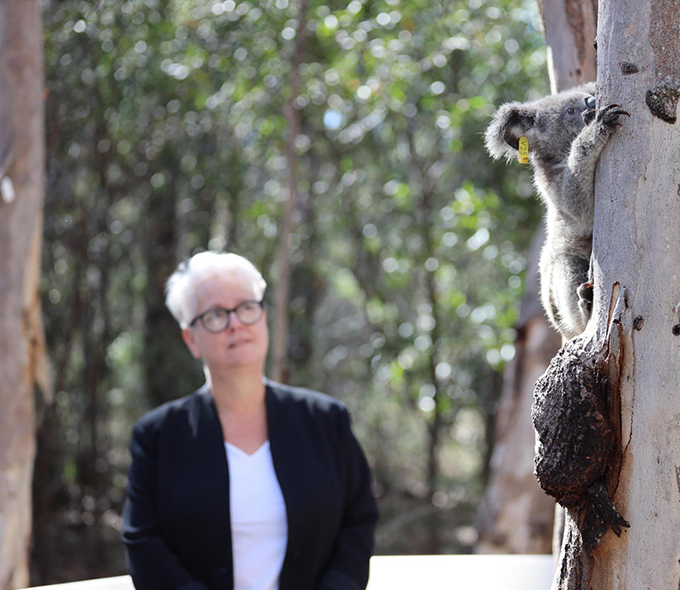Tasmanian farmers have reported their lowest levels of confidence in more than two decades, as concerns around commodity prices and seasonal conditions weigh on the state’s rural sector, the latest quarterly Rabobank Rural Confidence Survey has found.
It’s the third consecutive quarter to see a fall in farmer confidence in the state, and the latest dip pushes sentiment to the lowest recorded in the survey, which has been conducted since 2000.
Only four per cent of Tasmanian farmers expect the agricultural economy to improve over the next 12 months, down from seven per cent in the previous quarter, and more expect conditions to worsen (66 per cent, up from 51 per cent last survey).
Overall though, concerns about falling commodity prices continued to be the leading cause for pessimism among the state’s primary producers – nominated by 89 per cent of those expecting deteriorating economic conditions in the year ahead (up from 74 per cent).
Rising input costs were also a worry – for 41 per cent of Tasmanian farmers who expect conditions to worsen (up from 32 per cent) – and concerns about seasonal conditions doubled – 40 per cent now citing drought, up from 19 per cent.
Rabobank area manager for Tasmania, Stuart Whatling said this decline in positive sentiment flowed from the pinch felt after a dry winter and spring in the state’s south, compounded by the long-anticipated – and finally declared – return to El Niño conditions.
“While commodity prices have been coming down for consecutive quarters, farmers here are now really seeing the weather turn against them, which is compounding concerns for the outlook,” he said.
“There was insufficient spring rain in the south of Tasmania, and the full effects of this are being felt now. On top of this, while the dry initially looked like a predominately southern situation, we’ve seen similar conditions further north where it dried off quite early.”
In response to the declaration of El Niño, Tasmanian farmers in the latest survey were asked what strategies will become more important to managing their farm business over the next 12 months.
Adjusting stocking rates (which encompassed destocking or more conservatively stocking) was identified by 43 per cent, followed by investing in water infrastructure. This focus on improving water use efficiency has been an ongoing investment activity for Tasmanian farmers.
“Red meat producers have responded to the dry with significant destocking, at least where there was processing capacity,” Mr Whatling said.
“Poor establishment of cereal crops could see many areas grazed off this summer, rather than taken through to harvest, due to the lack of fodder options following the poor spring.”
However, Mr Whatling said, there was a silver lining to the dry conditions.
“A dry spring did benefit mixed cropping and dairy enterprises who have irrigation – without a cold, wet spring like they experienced last year, they were able to utilise their irrigation to hit the ideal crop establishment windows.”
Mr Whatling said the higher levels of optimism expressed in the dairy sector reflected the certainty of having milk prices secured through until June 30.
“There’s also some confidence from dairy farmers based on the outlook for the 2025 financial year, which is more positive in response to milk futures increasing in New Zealand,” he said.
Despite lowered confidence, 20 per cent of Tasmanian farmers indicated they will increase investment in their farm business over the next year – up from 16 per cent in the third quarter. However, 27 per cent are looking to decrease investment (up from 10 per cent).
On-farm infrastructure remained the leading area for investment, although down from the previous quarter. There was, though, heightened interest in investing in irrigation/water infrastructure.
“There are two sides to the investment story,” Mr Whatling said.
“On one hand, farmers had earmarked cashflow for investment and, with reduced income due to seasonal and market factors, are now tightening their belts and curbing investment intention. On the other side of the equation, there are those who see the opportunity to invest in irrigation infrastructure, which continues at pace in Tasmania.”
More than half of those Tasmanian producers planning to increase investment were intending to spend on education, which, Mr Whatling said, could encompass an intention for employers to invest in training for their on-farm workforce, as a labour retention strategy.
There was less investment appetite for new plant/machinery, increasing labour, increasing livestock numbers and adopting new technologies.
“The instant asset write-off brought forward a lot of capital expenditure and now that this incentive has ended, many farmers are entering a period of consolidation,” Mr Whatling said.
This quarter, while more than half of Tasmanian farmers who are planning to increase their investment in the coming year expected to purchase land, this was down on the previous quarter.
“There was, however, still significant interest among farmers looking to purchase land over the next 12 months, and this is reflected in the ongoing strength of our rural real estate market,” Mr Whatling said.
“We really haven’t seen any impact of commodity prices, interest rates or drought on land prices in Tasmania.”
Despite another rate rise during the survey period, Tasmanian farmers are less worried about rising interest rates, with fewer nominating interest rates as cause for their pessimistic outlook on the year ahead.
“Farmers are less concerned about future interest rate rises as there is an expectation that we are moving towards the top of the rate cycle,” Mr Whatling said.
The ramifications of the season and soft commodity prices on cashflow was reflected with more Tasmanian farmers expecting to increase their borrowing in the year ahead (28 per cent, up from 19 per cent the previous quarter).
“Increasing debt is taking two forms at the moment – as well as debt already locked in for capital expenditure such as fences, silos and machinery, there’s a number of requests for working capital,” Mr Whatling said.
In line with reduced cashflow, Tasmanian farmers had lower income expectations for the coming year – more expect their income to decrease (78 per cent, compared with 50 per cent in Q3) and only six per cent expect income to increase (12 per cent in Q3).
A comprehensive monitor of outlook and sentiment in Australian rural industries, the Rabobank Rural Confidence Survey questions an average of 1000 primary producers across a wide range of commodities and geographical areas throughout Australia on a quarterly basis.
The most robust study of its type in Australia, the Rabobank Rural Confidence Survey has been conducted since 2000 by an independent research organisation. The next results are scheduled for release in March 2024.








